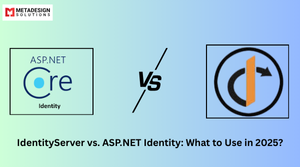Understanding OAuth2 and OpenID Connect
Before diving into implementation, it’s crucial to grasp the fundamentals of OAuth2 and OpenID Connect.
OAuth2: Authorization Framework
OAuth2 is an industry-standard protocol for authorization, allowing third-party applications to access user data without exposing credentials. It enables applications to obtain limited access to user accounts on an HTTP service. OAuth2 defines roles such as client, resource owner, resource server, and authorization server, facilitating secure resource access.
OpenID Connect: Authentication Layer
OpenID Connect is an authentication layer built on top of OAuth2. It enables clients to verify the identity of end-users based on authentication performed by an authorization server, providing a standardized way to authenticate users and obtain profile information.
Why Integrate OAuth2 and OpenID Connect in .NET 8?
Integrating these protocols in your .NET 8 application offers several benefits:
- Enhanced Security: Protects user data by delegating access without exposing credentials.
- Scalability: Facilitates single sign-on (SSO) across multiple applications.
- Flexibility: Supports various authentication scenarios, including integration with external providers.
.NET 8 introduces improvements that simplify the integration of these protocols, making it more straightforward to secure your applications.
Implementing OAuth2 and OpenID Connect in .NET 8
To integrate OAuth2 and OpenID Connect into your .NET 8 application, follow these steps. With our Custom .NET development services, we ensure seamless integration of these security protocols to protect your application. Additionally, our ASP.NET development services offer expert guidance in building secure, high-performance applications tailored to your needs, ensuring robust authentication and authorization mechanisms for your users:
1. Choose an OpenID Connect Provider
Select a provider that supports OAuth2 and OpenID Connect, such as Microsoft Entra ID, Auth0, or Duende IdentityServer. For this guide, we’ll use Microsoft Entra ID.
2. Register Your Application
Register your application with the chosen provider to obtain a Client ID and Client Secret. In Microsoft Entra ID, this involves creating a new app registration and configuring redirect URIs.
3. Configure Services in Your .NET 8 Application
In your Program.cs or Startup.cs, configure authentication services:
csharp code
builder.Services.AddAuthentication(options =>
{
options.DefaultScheme = CookieAuthenticationDefaults.AuthenticationScheme;
options.DefaultChallengeScheme = OpenIdConnectDefaults.AuthenticationScheme;
})
.AddCookie()
.AddOpenIdConnect(options =>
{
options.Authority = "https://login.microsoftonline.com/{tenant}";
options.ClientId = "{client_id}";
options.ClientSecret = "{client_secret}";
options.ResponseType = OpenIdConnectResponseType.Code;
options.SaveTokens = true;
options.GetClaimsFromUserInfoEndpoint = true;
options.Scope.Add("openid");
options.Scope.Add("profile");
options.Scope.Add("email");
});
Enhance Your .NET 8 Application's Security
Looking to implement robust authentication and authorization? Schedule a consultation with MDS to integrate OAuth2 and OpenID Connect into your .NET 8 application.
This configuration sets up the OpenID Connect authentication handler with the necessary parameters.
4. Protect Your Application Routes
Use the [Authorize] attribute to secure your controllers or actions:
csharp code:
[Authorize]
public class HomeController : Controller
{
public IActionResult Index()
{
return View();
}
}
This ensures that only authenticated users can access the specified resources.
5. Handle Authentication Events
Customize authentication events to handle scenarios like token validation or user sign-in:
csharp code:
options.Events = new OpenIdConnectEvents
{
OnTokenValidated = context =>
{
// Custom logic
return Task.CompletedTask;
},
OnAuthenticationFailed = context =>
{
context.Response.Redirect("/Home/Error");
context.HandleResponse();
return Task.CompletedTask;
}
};
This allows for more granular control over the authentication process.
Best Practices for Securing .NET 8 Applications
- Use HTTPS: Ensure all communications are encrypted by using HTTPS.
- Validate Tokens: Always validate tokens received from the identity provider to prevent unauthorized access.
- Handle Errors Gracefully: Implement proper error handling to manage authentication failures and provide user-friendly messages.
- Keep Dependencies Updated: Regularly update your packages and dependencies to incorporate security patches and improvements.
Conclusion
Integrating OAuth2 and OpenID Connect into your .NET 8 application enhances security and provides a robust framework for managing user authentication and authorization. By following the steps outlined above and adhering to best practices, you can ensure that your application is secure, scalable, and ready to meet modern authentication demands.
Related Hashtags:
#IdentityServer #ASPNETIdentity #Authentication #Authorization #DotNetDevelopment #SSO #APISecurity #DuendeIdentityServer #IdentityManagement #NetCore



